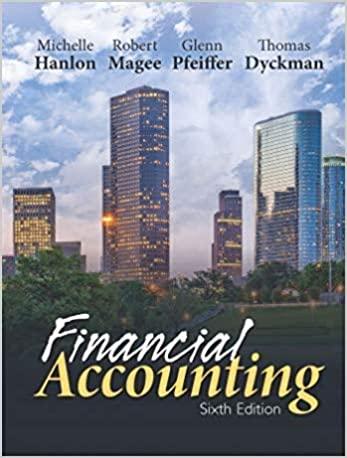The current asset section from Seneca Foods Corporation, a low-cost producer and distributor of quality fruits and
Question:
The current asset section from Seneca Foods Corporation, a low-cost producer and distributor of quality fruits and vegetables, March 31 , 2018 annual report follows:
Seneca reports the following related to its gross profit:
Seneca further reports the following footnote:
11. Inventories:
Effective December 30, 2007 (beginning of 4th quarter of Fiscal Year 2008), the Company changed its inventory valuation method from the lower of cost, determined under the FIFO method, or market to the lower of cost, determined under the LIFO method, or market. In the high inflation environment that the Company was experiencing, the Company believed that the LIFO inventory method was preferable over the FIFO method because it better compares the cost of current production to current revenue. The effect of LIFO was to reduce net earnings by $11.2 million in 2018, increase net earnings by $6.6 million in 2017 and increase net earnings by $18.0 million in 2016, compared to what would have been reported using the FIFO inventory method. There were no LIFO liquidations during the three-year period ending March 31, 2018. The excess of FIFO cost of inventory over the LIFO cost of inventory was $158.8 million in 2018 and $143.8 million in 2017. In prior financial statements, Seneca has stated that it "manages the Company for cash, not reported earnings" and that the "decision to switch to UFO has turned out to be a very prudent one of the last five years."
a. Compute the ratio of inventories to total current assets for 2018. As recently as 2014, this ratio was 77%. Is the change observed for the ratio a positive development for a company such as Seneca? Explain.
b. Compute inventory turnover for both 2018 and 2017 (2016 ending inventories were $609,481). Interpret and explain the change in inventory turnover as positive or negative for the company.
c. What inventory costing method does Seneca use? What effect has the use of this method (relative to FIFO or LIFO) had on its reported income for 2018 and 2017? Was the result an increase or decrease? Explain.
d. Seneca claims that it manages its company for cash flow. Does its inventory reporting help the Company to do so? How much in taxes has Seneca saved, assuming a 25% tax rate, by the inventory approach it adopted?
Step by Step Answer:

Financial Accounting
ISBN: 9781618533111
6th Edition
Authors: Michelle L. Hanlon, Robert P. Magee, Glenn M. Pfeiffer, Thomas R. Dyckman





